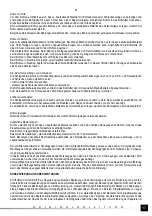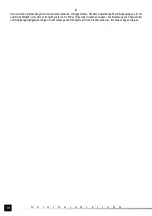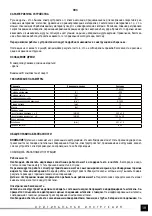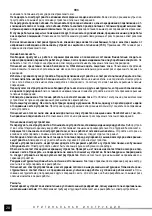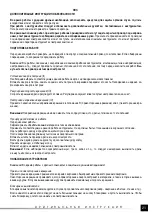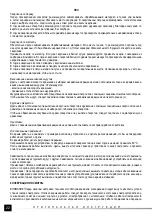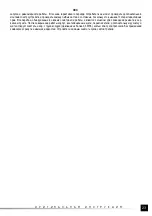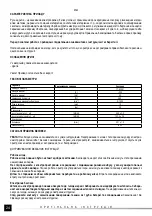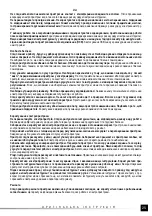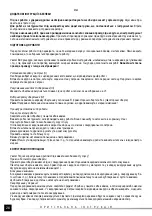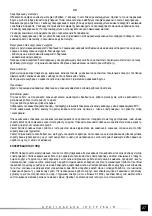
12
GB
O R I G I N A L I N S T R U C T I O N S
Adjustments of rotation (III)
The hammer drill permits continuous adjustments of rotation. Adjustment is possible by changing the position of the handwheel
next to the switch.
Setting the direction of the rotation (IV)
Set the rotation switch in accordance with the arrows; right rotation – the arrow pointing to the front of the tool, left rotation – the
arrow pointing to the back of the tool.
Attention! The direction of the rotation of the tool may be changed only if the power supply voltage is off!
Preparation for work
Before work:
The processed material must be appropriately fixed, using an anvil or clamps.
Use tools which are appropriate for the task to be realised. Make sure they are sharpened and in good conditions.
Wear working clothes and sight and hearing protection.
Plug the cord to the mains.
Hold the drill with both hands by the handle and the additional handle
Adapt a position that guarantees equilibrium.
Turn the hammer drill off, pressing the switch with a finger.
Attention!
In case any suspicious sounds or smell are detected the hammer drill must be immediately disconnected from the
mains.
OPERATION OF THE TOOL
Right or left rotation
Right rotation should be used while drilling with common right turn drill. Left rotation must be used if the right turn drill is jammed
in the material and in case of driving screws.
In case of driving screws into a surface, minimum rotation must be used.
Using the switch lock
It is recommended to use the switch lock in case of long drilling, e.g. in case of drilling in concrete, walls, etc. While the switch
is pressed, press the lock button with your thumb and release the switch. In order to release the lock, it is sufficient to press the
electric switch.
Drilling in wood
Before drilling, it is recommended to fix the material to be processed with a clamp or in an anvil, and then using a punch or a nail
mark the place of drilling. Install the drill in the chuck, set the speed, connect the drill to the mains and start drilling.
In case of drilling through the material, it is recommended to place a wooden pad under the material, so that the edge of the hole
at the outlet will be smooth.
In case of drilling large diameter holes, it is recommended to drill first a smaller guide hole.
Drilling in metals
It is always necessary to fix the material to be processed securely. In case of thin sheet metal, it is recommended to place a piece
of wood under it, so as to avoid any deformations. Then mark the places of drilling using a punch and start drilling. Use drills for
steel. In case of drilling in white cast iron, it is recommended to use drills with sintered carbide bits. While drilling larger holes, it is
recommended to drill first a smaller guide hole. While drilling steel, cool the drill with machine oil. In case of drilling in aluminium,
use turpentine oil or paraffin to cool the drill. In case of drilling in brass, copper or cast iron do not use any substances to cool the
drill. In order to cool it, is required to remove it frequently from the material.
Using the drill to drive or remove screws
A drill with adjustable rotation and a switch to change the direction of rotation may also be used to drive screws in and remove
them. In order to do so, the following is recommended:
- use the lowest rotational speed,
- use appropriate bits.
Bits may be installed directly in the chuck, or with a special magnetic holder.
In order to remove a screw set the direction of rotation to the left (L).
Carving holes
The drill may be used to carve larger holes in wood, using special drills of fixed diameter or interchangeable bits from the saw set
– jig-saws. In order to obtain smooth edges of the outlet of the hole, place a piece of wood under the material.
Содержание YT-82051
Страница 20: ...20 RUS...
Страница 21: ...21 RUS II III V IV R L...
Страница 22: ...22 RUS L 60 o C...
Страница 23: ...23 RUS 0 3 MPa...
Страница 25: ...25 UA...
Страница 26: ...26 UA II III VI IV R L...
Страница 27: ...27 UA L 60o C a E a 0 3 MPa...

















